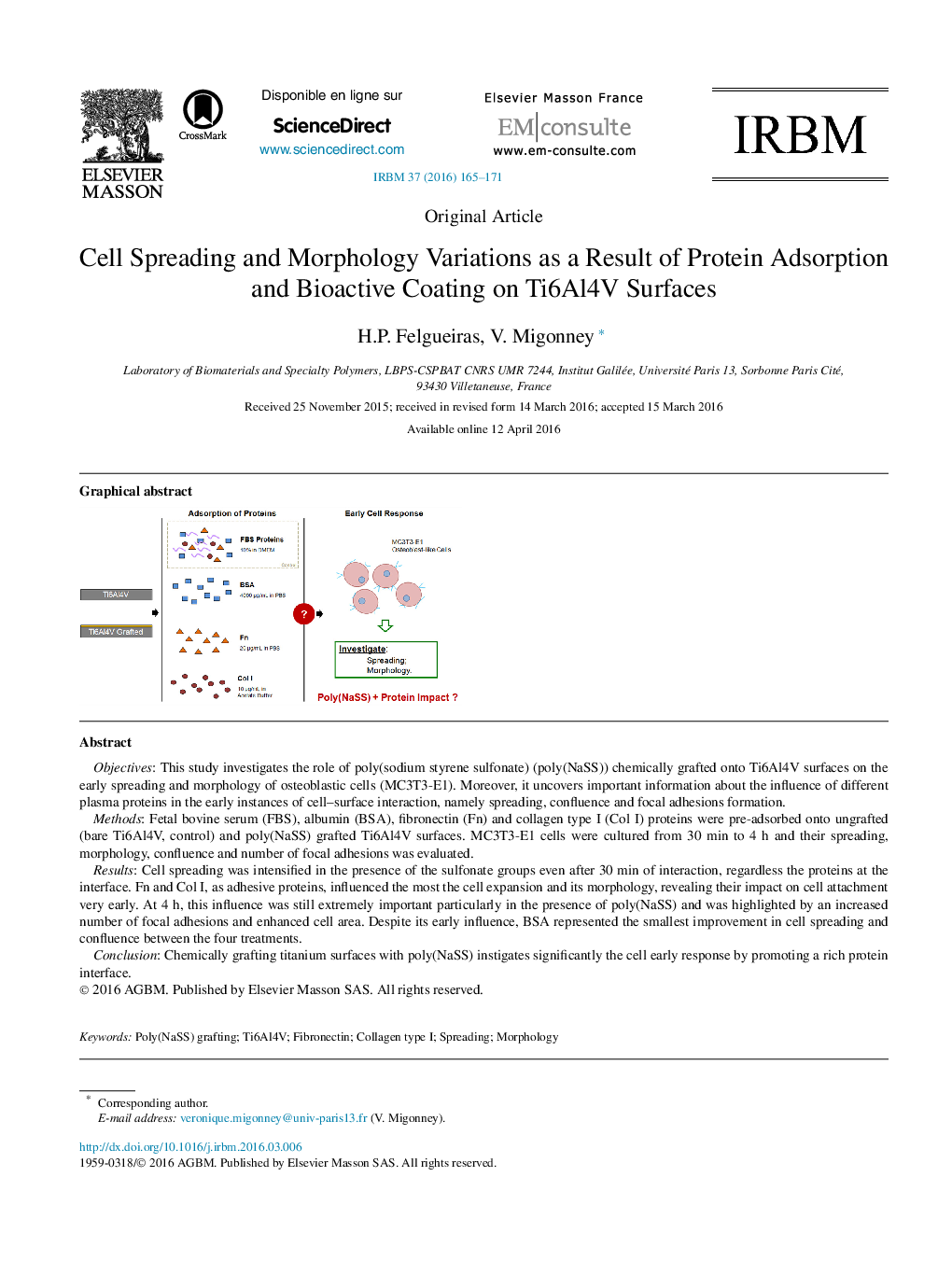| کد مقاله | کد نشریه | سال انتشار | مقاله انگلیسی | نسخه تمام متن |
|---|---|---|---|---|
| 870752 | 910018 | 2016 | 7 صفحه PDF | دانلود رایگان |

• MC3T3-E1 cells were cultured in the presence of FBS, BSA, Fn and Col I proteins.
• The combined effect of poly(NaSS) and proteins on the cells was evaluated.
• Cell spreading is intensified in the presence of SO3− groups.
• Cell spreading and morphology is improved by Fn.
• BSA treated surfaces had the lowest impact in the cell response.
Objectives: This study investigates the role of poly(sodium styrene sulfonate) (poly(NaSS)) chemically grafted onto Ti6Al4V surfaces on the early spreading and morphology of osteoblastic cells (MC3T3-E1). Moreover, it uncovers important information about the influence of different plasma proteins in the early instances of cell–surface interaction, namely spreading, confluence and focal adhesions formation.Methods: Fetal bovine serum (FBS), albumin (BSA), fibronectin (Fn) and collagen type I (Col I) proteins were pre-adsorbed onto ungrafted (bare Ti6Al4V, control) and poly(NaSS) grafted Ti6Al4V surfaces. MC3T3-E1 cells were cultured from 30 min to 4 h and their spreading, morphology, confluence and number of focal adhesions was evaluated.Results: Cell spreading was intensified in the presence of the sulfonate groups even after 30 min of interaction, regardless the proteins at the interface. Fn and Col I, as adhesive proteins, influenced the most the cell expansion and its morphology, revealing their impact on cell attachment very early. At 4 h, this influence was still extremely important particularly in the presence of poly(NaSS) and was highlighted by an increased number of focal adhesions and enhanced cell area. Despite its early influence, BSA represented the smallest improvement in cell spreading and confluence between the four treatments.Conclusion: Chemically grafting titanium surfaces with poly(NaSS) instigates significantly the cell early response by promoting a rich protein interface.
Figure optionsDownload as PowerPoint slide
Journal: IRBM - Volume 37, Issue 3, June 2016, Pages 165–171